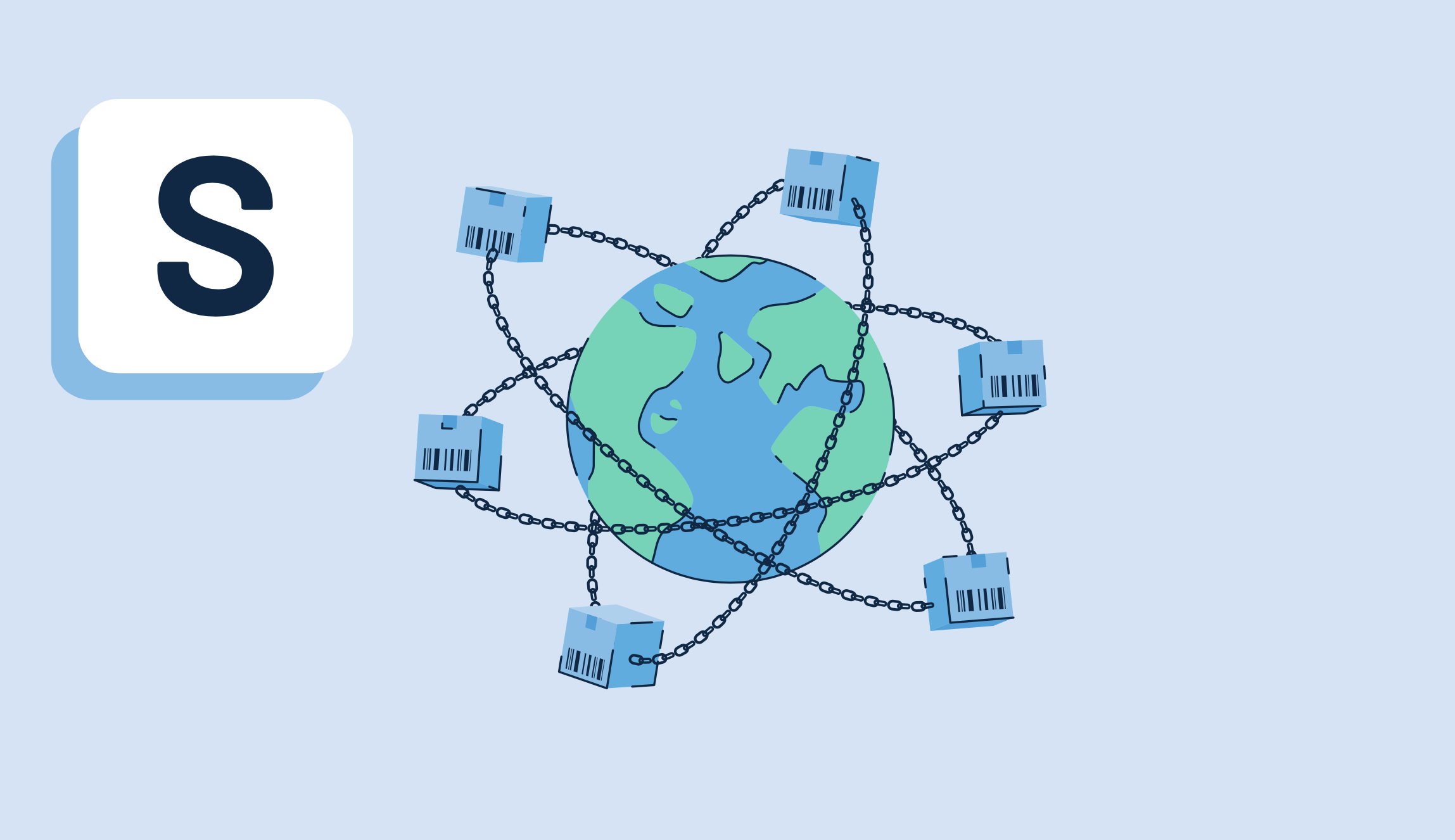What is supply chain management?
Supply chain management (SCM) involves overseeing how a company’s goods or services move through the supply chain, from conception to the end-user. It consists of supply and demand management, sales and operations planning, customer service, and more. Improving supply chain processes using management methods helps companies satisfy customer needs and increase profit margins.
Companies use supply chain management software to automate managing different supply chain elements. Various SCM solutions give businesses the tools to balance supply chain elements, customize management plans, manage supplier relationships, conduct portfolio analytics, monitor carrier performance, and improve fulfillment.
Supply chain management elements
Eight elements make up a robust supply chain management process. These elements work together to give companies a comprehensive view of their supply chain, what is or isn’t working, and how to optimize the supply chain for success.
- Demand management is the process of forecasting and organizing potential demand. Companies use demand planning strategies to predict and control their production process.
- Supply management focuses on procuring the resources and suppliers necessary to keep up with company operations.
- Inventory management allows companies to plan and organize their inventory for production needs. This includes implementing organizational methods and replenishing resources when required.
- Order management focuses on the order process’ lifecycle. It helps manage orders from receipt to delivery to the end-user.
- Warehouse management is the process of organizing warehouse production. This includes ordering and receiving necessary stock, managing labor, and tracking success metrics.
- Sales and operations planning involves a company’s leadership team working together on a comprehensive business plan. Leaders analyze all aspects of their supply chain process to arrange the finances, set key performance indicators (KPIs), and allocate resources.
- Product portfolio management involves analyzing a company’s product portfolio to ensure that all products sold remain relevant and contribute to overall company success.
- Customer service plays a critical role in supply chain management because customers can make or break a company’s success. Ensuring a seamless user experience is arguably the most important and demanding part.
Benefits of supply chain management
Managing the supply chain can be challenging. It requires a lot of time, resources, and experience. But it’s also key to business success.
- Save money. An efficient supply chain process facilitates better cash flow. Supply chain management emphasizes the effective use of resources. This minimizes inventory waste and leaves little room for shortages or surpluses. SCM also saves time. When time equals money, every minute counts.
- Balance supply and demand. Too much supply or demand is never good. The last thing a company wants is to get caught on either side. Supply chain management helps create an extensive planning process that enables companies to better predict needs and align their supply and demand.
- Increase quality control. Supply chain management ensures every step of the supply chain process runs smoothly and successfully. More work put into each element allows for more eyes and care. This increases product quality because everything leaving company facilities is in the best condition.
- Improve the customer experience. An improved supply chain process works like a domino effect. With everything at play, order fulfillment levels up, and customers are thankful for it.
- Build strong partnerships. Supply chain management helps create a strong supply chain. Spending that extra time building relationships with suppliers sets a solid foundation for prompt communication and collaboration.
The supply chain management process
The supply chain management process consists of five key steps. Each step is essential in effectively managing a supply chain.
- Planning: The study session. Planning is the beginning of understanding what is needed for supply chain success. This includes preparing resources to allocate, determining suppliers needed, and setting the key performance indicators to benchmark performance.
- Sourcing: The search begins. Sourcing selects suppliers who will be part of the supply chain team. In this step, companies determine how they plan to monitor supplier performance and maintain the communication flow.
- Manufacturing: The meat and bones. At this step, production is in full swing, from product manufacturing to quality control and preparations for shipping.
- Delivering: The journey to the end. Once the products are ready and tested for quality, they’re shipped to the end-user. Delivery includes collecting tracking information, receiving payment for the product, and ensuring a smooth delivery. Communicating with the customer is necessary if anything goes wrong at this stage.
- Returning: The UNO reverse card. Sometimes, the supply chain lifecycle doesn’t end with delivery. A big part of supply chain management is customer service for returns – taking back products that may be defective or simply didn’t satisfy customer needs. The return process should be easy for both the company and the consumer. Companies should use returns to learn what can be done to avoid a similar situation in the future.
Supply chain management best practices
Companies should keep a few best practices in mind when managing the supply chain. These best practices level up how they oversee and organize their supply chain.
- Create a strong supply chain team. A voyage is only as good as those steering the ship. The key to starting the supply chain management process strong is building a team of winners. This includes internal employees and leadership teams as well as external suppliers and carriers. Success is imminent when everyone is on the same page and working toward the same goal.
- Keep communication open. To stay on the same page, communication should be a priority. With so many stakeholders, it can be easy for companies to overlook communication. No matter the number of suppliers and external team members, companies need to ensure that goals are clear and problems are addressed and resolved quickly.
- Conduct business forecasts. Business forecasting helps predict “what is needed” within the supply chain process. Supply chain management requires extensive decision-making, and a good idea of what’s to come can make those decisions a lot easier.
- Track success metrics. If a company wants to know what isn’t working, it also needs to know what is. Keeping an eye on both using predetermined success metrics can help it adjust processes along the way to counteract issues or continue its winning streak.
- Utilize technology. When in doubt, lean on automation to do the hard work and reduce the chance of human error. Software solutions on G2 can help steer companies in the right direction.
- Expect the unexpected. Anything can derail supply chain management. Creating a backup plan can mean the difference between success and failure.
Supply chain management vs. operations management
Supply chain management is the process of managing a product or service from its conception to delivery to the end customer. Supply chain management includes coordination of suppliers and distribution channels, transportation and logistics, inventory optimization and reordering, purchasing, and supplier relationship management. A supply chain manager works with external stakeholders, suppliers, and customers.
Operations management is the process of optimizing the production and manufacturing of company goods. It ensures all aspects of the business (like inventory, labor, and materials) run smoothly to meet customer demand. Operations management focuses primarily on the internal processes of the supply chain and ends when the product leaves the company premises. An operations manager oversees daily operations and employee safety.

Alexandra Vazquez
Alexandra Vazquez is a Senior Content Marketing Specialist at G2. She received her Business Administration degree from Florida International University and is a published playwright. Alexandra's expertise lies in writing for the Supply Chain and Commerce personas, with articles focusing on topics such as demand planning, inventory management, consumer behavior, and business forecasting. In her spare time, she enjoys collecting board games, playing karaoke, and watching trashy reality TV.





















